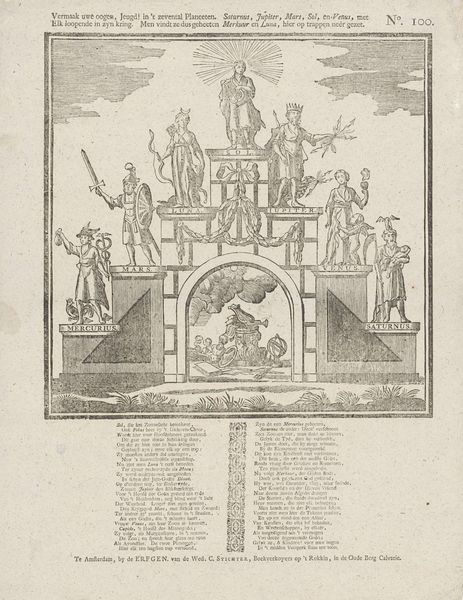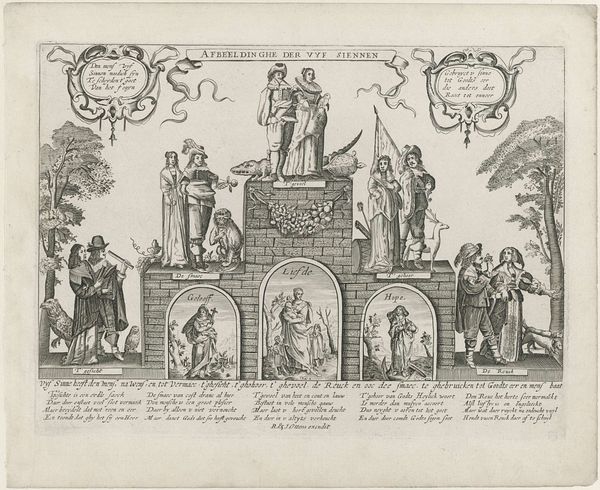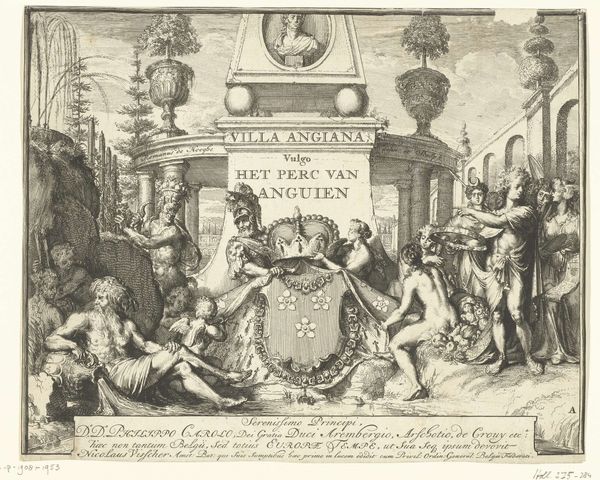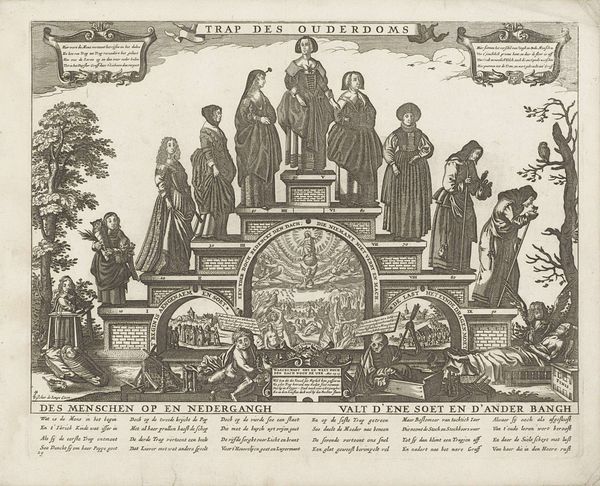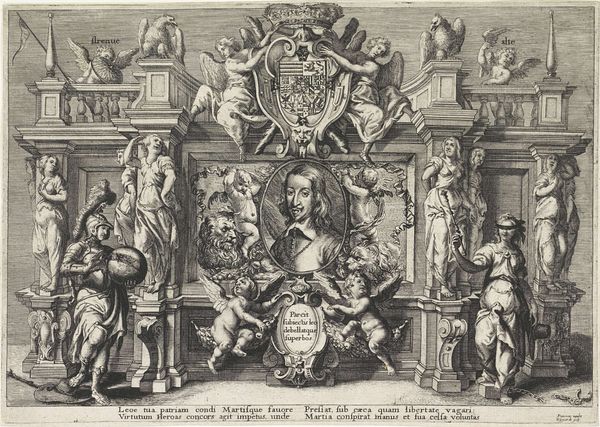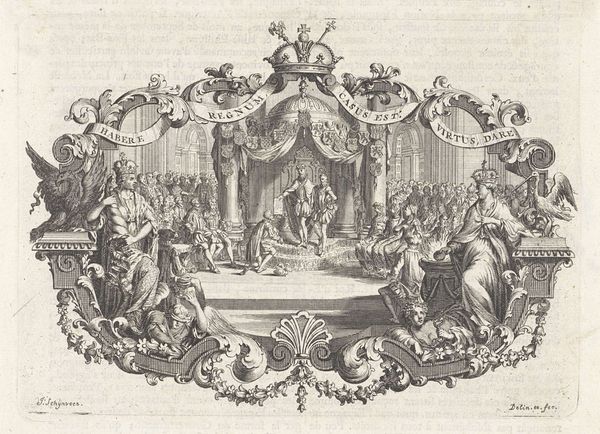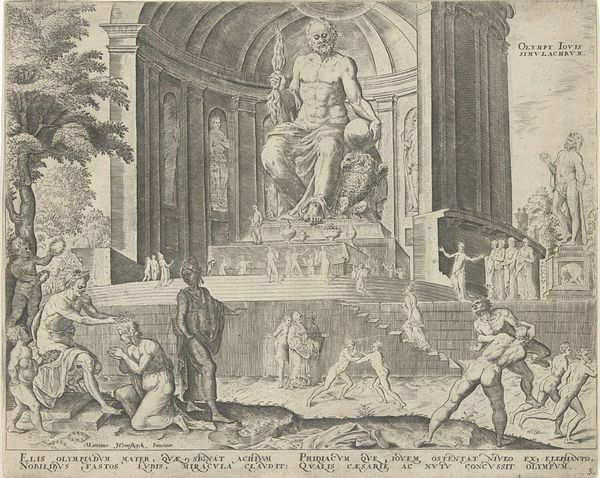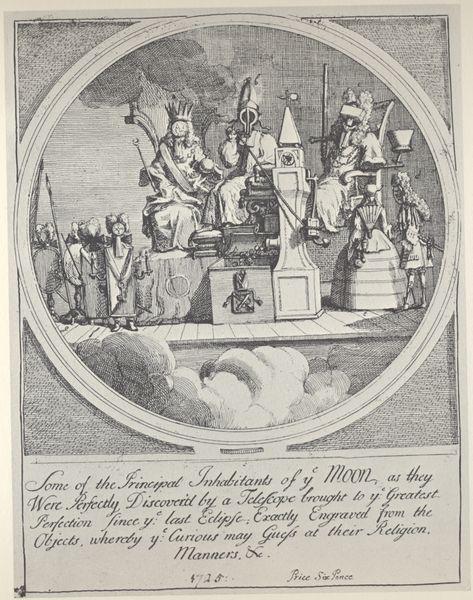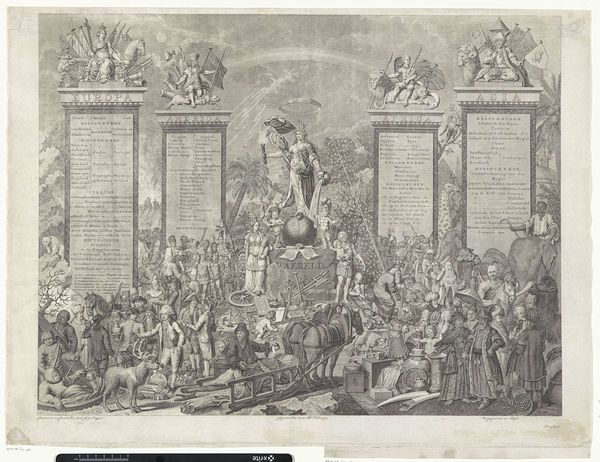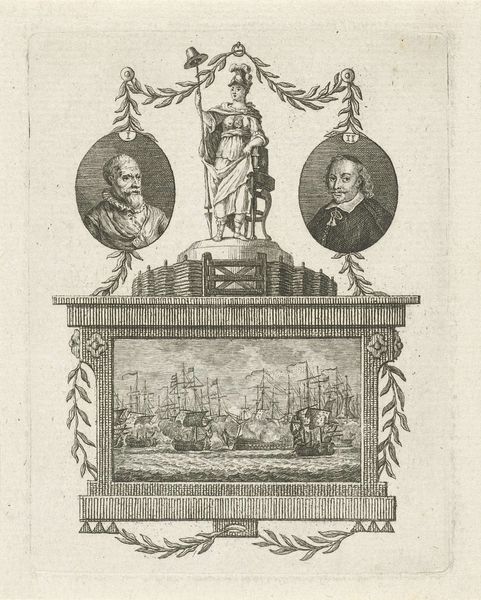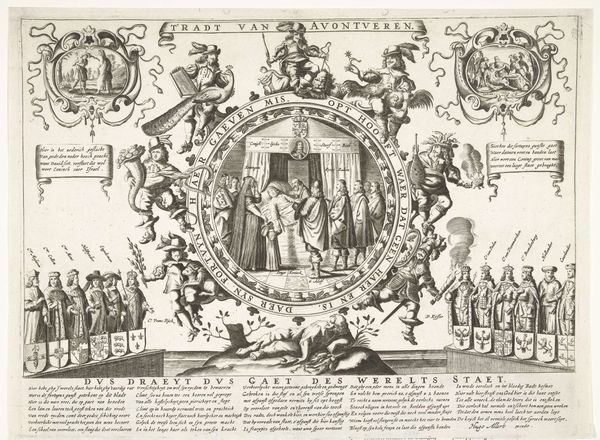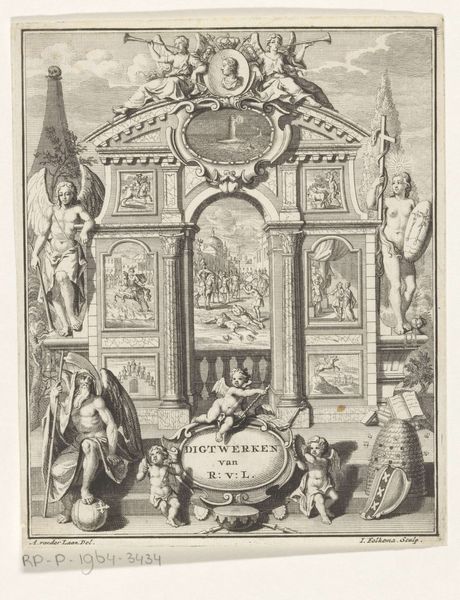
print, engraving
#
allegory
#
baroque
#
dutch-golden-age
# print
#
old engraving style
#
figuration
#
vanitas
#
line
#
genre-painting
#
history-painting
#
engraving
Dimensions: height 408 mm, width 604 mm
Copyright: Rijks Museum: Open Domain
Jan Barentsz. Muyckens created this etching, called "Trap des Levens," in the Netherlands, sometime in the mid-17th century. The image depicts a staircase representing the stages of life, from infancy to death. The Dutch Golden Age, during which Muyckens produced this print, was marked by the rise of a wealthy merchant class, whose values of industry, thrift, and civic responsibility helped to shape artistic production. Here, the allegorical figures ascending and descending the staircase are rendered with a cool sobriety that speaks to the society of the time. The artist seems to suggest that life is a journey toward decay and death, an idea that resonates with the Protestant worldview of the Dutch Republic. This would remind viewers of the transience of earthly existence. To understand this work better, we might consult contemporary Dutch literature, religious sermons, and emblem books, which were popular sources of visual and symbolic imagery. By examining the work in its original social and institutional context, we can see how it reflects and comments on the values and beliefs of its time.
Comments
No comments
Be the first to comment and join the conversation on the ultimate creative platform.

